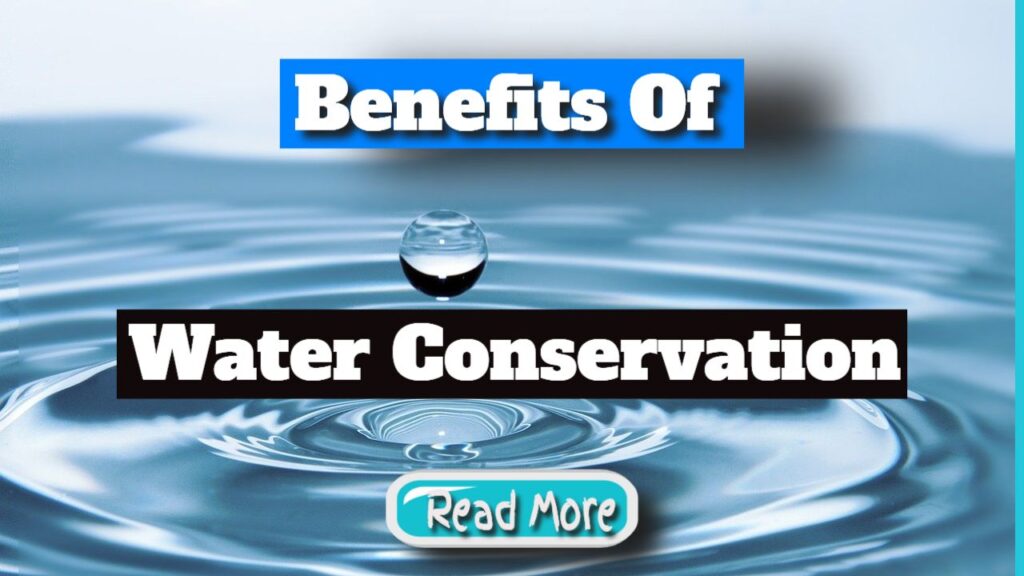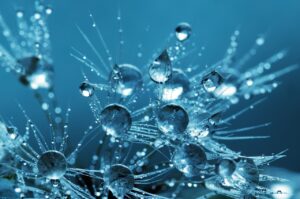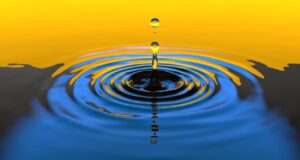Key Topics Covered
- Effective Strategies to Minimize Your Water Footprint
- Selecting the Best Home Water Filters and Treatment Solutions
- Top 7 Practical Ways to Conserve Water
- Determining Your Filtered Water Needs
- Identifying the Right Water System for Your Home
- Understanding Your Water Usage Patterns
- Optimize Laundry Efficiency to Save Water
- Eco-Friendly Car Washing Techniques at Home
- How to Request a Water Meter Test
- Eco-Conscious Car Washing at Home
Effective Strategies to Minimize Your Water Footprint
Reducing your water footprint is essential for environmental sustainability. The process of transporting water from central plants consumes significant energy, with studies indicating that approximately 7% of California's energy is dedicated to this task. By implementing water-saving measures at home, not only do you reduce water consumption, but you also contribute to energy conservation and a lower carbon footprint.
Simple adjustments and conscious choices regarding water usage can lead to a reduction in consumption by over 50%. Even minor commitments can yield significant results, highlighting the importance of collective effort. In our previous articles, we explored various high-efficiency plumbing fixtures such as toilets and water heaters that homeowners can install to effectively lower their water bills and lessen their environmental impact.
However, enhancing water efficiency extends beyond just toilets; you can also replace traditional sink faucets with eco-friendly alternatives that help cut down on unnecessary water usage. Every small step towards improving water efficiency contributes to broader conservation efforts.
It’s important to recognize that the cultivation, processing, and transportation of food are major contributors to water consumption. Reducing your intake of meat and dairy, opting for local produce, and even growing your own food can greatly diminish your overall water footprint. When more individuals engage in these practices, it leads to a significant decrease in both water usage and food waste.
Additionally, harvesting rainwater is one of the most straightforward and natural methods to save water. Installing a rain barrel and appropriate gutters can help you collect water during rain events, which not only lowers your water bill but also reduces your household's carbon footprint. Systems like rainwater harvesting and drip irrigation represent practical, cost-effective renovations for any home.
Selecting the Best Home Water Filters and Treatment Solutions
Home and business water filters come in various types, including water filter jugs, faucet-mounted units, built-in tap filters, countertop filters, under-sink systems, and comprehensive whole-house treatment solutions. Before purchasing a filter, it’s crucial to understand that no system can completely eliminate all water impurities. Identifying your specific needs before shopping will ensure you select the most suitable option.
Each filter type utilizes different technologies, so reading the labels attentively is essential. For example, some filters may effectively reduce contaminants, while others may not, making it important to do your research to find a filter that meets your purification goals.
Top 7 Practical Ways to Conserve Water
Paying your water bill has never been easier, with options available to handle payments online, by mail, or in person. For first-time users of this service, setting up a new account is straightforward and can be completed in minutes. Understanding your water bill can help you manage your household budget effectively, especially since the average water bill can take up a considerable percentage of a family’s income.
Consider discussing electronic payment plans with your bank, as the average homeowner spends about 31% of their income on water bills. This estimate can fluctuate based on regional variables and individual household usage. It’s vital to track your consumption habits and make adjustments where necessary, particularly in response to changing circumstances such as new landscaping or increased guest traffic.
Furthermore, Senate Bill 181 emphasizes the importance of establishing a sector-based water use metric, adjusted for municipal variables, to facilitate accurate comparisons in water usage and conservation efforts across different regions. By improving the water quality in your home or business, you can save money and reduce the strain on our precious natural resources, particularly our vulnerable water infrastructure.
As climate change continues to impact our world, the push for energy efficiency is becoming increasingly pressing. Rising energy costs and extended drought periods have prompted consumers to seek innovative ways to cut expenses while preserving the environment.
Since 2006, the EPA has launched the “Watersense” program, promoting high-efficiency plumbing fixtures that conserve water and resources, ultimately lowering operating costs for consumers. Recognizing that the primary factors influencing water consumption are often behavioral, it’s essential to identify methods for reducing, reusing, and recycling water within your home.
For example, consider the water footprint of everyday products, like jeans, and prioritize purchasing recycled items. National organizations, including the Environmental Protection Agency, advocate for water efficiency measures, especially in areas facing drought challenges where water scarcity is a constant concern.
In addition, building managers have discovered that implementing water efficiency programs can significantly reduce operating costs. Effective water conservation translates to savings on electricity, gas, chemicals, and sanitation, ultimately benefiting both the environment and the bottom line.
Practicing efficient water use can yield substantial public health, environmental, and economic advantages, including improved water quality, preservation of aquatic ecosystems, and safeguarding drinking water sources.
Determining Your Filtered Water Needs
Plastic water bottles are notorious for their environmental impact, contributing significantly to pollution and landfill waste. Transitioning to filtered water solutions such as dispensers, refillable bottles, and water jugs can drastically reduce your reliance on single-use plastics.
Moreover, industrial manufacturers often utilize a myriad of PFAS chemicals, most of which evade drinking water regulations. A recent investigation highlighted that, among 120 tested samples of unfiltered tap water, at least one PFAS chemical was detected in 117 samples, with some exceeding EPA recommended limits.
Carrying a reusable water bottle is not merely a trend; it represents a conscious choice to help mitigate the environmental burden. It’s estimated that producing just one liter of bottled water requires three times the amount of water itself.
Fortunately, options for accessing safe tap and filtered water are expanding, with establishments like the +Hosts Hotel Eiger offering unlimited fresh mountain water straight from the tap. For more insights on ensuring safe tap water, refer to our comprehensive article on accessing potable water while on the go.
Instead of reaching for a disposable plastic bottle, consider installing a filtered tap system or keeping a large Brita jug in your refrigerator for easy access to clean water. This shift not only saves money but also significantly reduces plastic waste in landfills.
Identifying the Right Water System for Your Home
Conserving water has the added benefit of reducing sewage discharges, which can significantly impact community resources. While sewer bills often reflect flat fees, conserving water mitigates the strain on septic systems, decreasing the frequency of necessary pumping and minimizing malfunctions.
By installing water-efficient fixtures and appliances, you’ll contribute to energy conservation while simultaneously lowering wastewater flow. This results in reduced utility bills for homeowners, deferring capital expenses for utility providers, and enhancing the overall quality of the environment.
For a practical demonstration of water-efficient practices, consider visiting the WaterSense demonstration house at Water University at Texas A&M AgriLife Extension in Dallas.
WaterSense certified homes adhere to strict criteria, focusing on indoor water use (plumbing, fixtures, and appliances), outdoor water use (landscaping and irrigation systems), and homeowner education regarding conservation practices.
To further enhance water efficiency, it’s essential to regularly inspect for leaks in all water-using appliances and fixtures. Common culprits include malfunctioning toilets, dripping faucets, and outdoor irrigation systems. Replacing outdated toilets can have a significant impact, as they often use excessive water compared to modern, efficient models.
Flushing toilets account for the majority of household water usage; thus, if your home was constructed prior to 1992 and hasn’t undergone recent upgrades, switching to a WaterSense-labeled model that uses 1.28 gallons or less per flush could save a family of four around 16,000 gallons of water annually.
Understanding Your Water Usage Patterns
There are certain instances when single-use plastic containers, such as prescription bottles, prove exceptionally convenient. They are ideal for carrying small amounts of liquid or keeping items dry or wet while on the go.
In daily life, having a well-equipped first aid kit is essential, especially if you find yourself out and about. A waterproof container can be a lifesaver while hiking or engaging in water activities, ensuring that necessary supplies remain protected.
Using a bucket for washing your car instead of a continuous water source can also significantly reduce water waste. On average, individuals use about 50 gallons of water daily, and for those relying on public water sources, every drop wasted translates to increased costs.
Many households are now aware of the importance of conserving New York’s precious water resources. As families spend more time at home, engaging in activities like baking, gardening, and laundry, it’s vital to remain conscious of how these activities impact water consumption.
Be prepared for potential spikes in your water bill when family members indulge in long baths or outdoor splashing activities. This presents a great opportunity to involve the family in simple yet effective water-saving actions!
Optimize Laundry Efficiency to Save Water
It’s important to wait until you have a full load of laundry before running your washing machine. Washing two half loads consumes more water and electricity than a single full load, leading to higher utility costs. By accumulating enough dirty laundry to fill the washer, you can conserve both water and energy, resulting in significant savings on your bills.
Eco-Friendly Car Washing Techniques at Home
Instead of taking your vehicle to a commercial car wash, consider washing your car at home on your lawn. This not only conserves water but also provides your lawn with much-needed hydration. By using a hose nozzle or turning off the water while washing, you can save up to 100 gallons of water during the process.
Water is used in various ways around the home, and multiple factors influence overall water consumption. For instance, on average, households tend to water their lawns and gardens outdoors 2-3 times a week, along with filling swimming pools or washing cars.
Taking a shower every day for just 4.5 minutes with a water-saving showerhead can also contribute to significant water savings. Surprisingly, washing your car at home can consume more water than a self-service car wash, as commercial facilities utilize high-pressure hoses that effectively clean vehicles with much less water.
Additionally, washing cars at home often leads to contaminated water entering storm drains, which are designed to handle rainwater, not polluted runoff. The average garden hose dispenses up to 10 gallons of water per minute, meaning a 10-minute home car wash could waste 100 gallons!
Utilizing rain barrels, which are mosquito-proof containers designed to trap and store rainwater, presents another sustainable option for water conservation. Rainwater is naturally soft—devoid of chlorine, lime, or calcium—making it ideal for watering gardens, washing cars, or cleaning windows.
During peak summer months, homeowners can save approximately 1,300 gallons of water, equivalent to 40% of total household water use, simply by implementing rainwater collection systems.
How to Request a Water Meter Test
To ensure accurate billing, it’s wise to conduct a simple test of your home for leaks if your meter readings seem off. Understanding the factors contributing to increased water usage is crucial for effective conservation. This may include changes in outdoor watering practices due to new lawns or gardens, as well as accommodating additional overnight guests.
For instance, gas water heaters typically have a dial outside to control temperature, while electric models may have separate dials for upper and lower heating elements. It’s important to verify that these dials are set to the same temperature for consistent heating. When adjusting one dial, ensure to replicate the changes on the other to maintain balance.
Investing in a quality water filter, such as a ZeroWater filter, is a step towards a more sustainable future. The advanced 5-stage ion exchange filtration system not only helps reduce your water footprint but also delivers the purest tasting water free from impurities.
ZeroWater filters consistently outperform standard 2-stage filters like Brita. In tests conducted according to NSF protocols, ZeroWater effectively reduces 97% of lead and 99.9% of chromium from tap water, providing peace of mind regarding water safety.
Third-party testing confirms that these filters also reduce 96% of mercury, 99% of uranium, 93% of arsenic, and 99% of copper, among many other contaminants. Furthermore, ZeroWater provides a free water quality meter that lets you monitor the effectiveness of your water filter by displaying the number of impurities removed.
Eco-Conscious Car Washing at Home
Consider adopting energy-efficient practices to reduce your household energy consumption. Simple actions like turning off lights and unplugging appliances when not in use can go a long way in conserving electricity. You can also save energy by opting for manual tasks instead of relying on energy-intensive appliances—for example, hang-drying laundry instead of using a dryer or washing dishes by hand.
With Millennials comprising 37% of new home buyers in 2019, energy conservation has emerged as a key priority for this demographic, with a focus on energy efficiency topping their list of essential home features. Environmentally conscious young adults are increasingly seeking energy-efficient homes that not only save money but also minimize their ecological impact by reducing energy consumption.
Energy-efficient homes also provide improved comfort and security, enhancing the overall quality of life for families and increasing property resale value. A traditional sink faucet typically dispenses water at a rate of 2.2 gallons per minute. In contrast, WaterSense-approved faucets reduce this flow to 1.5 gallons per minute without compromising performance, achieving a reduction in water usage of 30% or more.
According to the WaterSense agency, the average homeowner can save over 700 gallons of water annually by switching to more efficient kitchen and bathroom sink faucets. This level of water conservation is comparable to the amount needed for 40 showers a year, underscoring the importance of making informed choices in water usage.
Tax credits for residential energy efficiency improvements have been extended retroactively until December 31, 2021. This includes credits for builders of energy-efficient homes and deductions for energy-efficient commercial buildings, as well as renewable energy tax credits that remain valid until the same date.
As the value of renewable energy tax credits declines, investing in solar panels, small wind turbines, and geothermal heat pumps is becoming increasingly advantageous.
The Article How Can You Reduce Your Water Footprint was found on https://limitsofstrategy.com
The post How Can You Reduce Your Water Footprint appeared first on https://alef3.com








Comments are closed